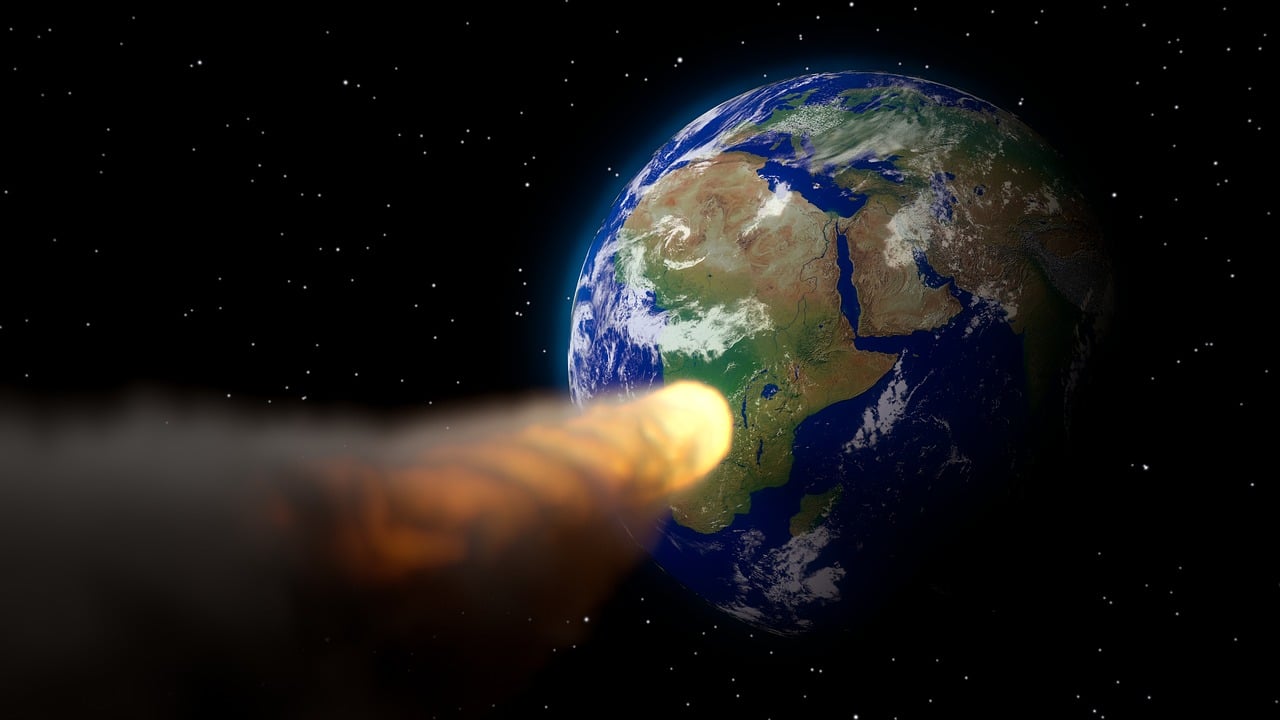A giant space rock hurtling towards Earth at thousands of miles per hour might sound like something from a sci-fi film, but a newly discovered asteroid, 2024 YR4, is indeed on a potential collision course with our planet.
First detected late last year, NASA estimates its size to be between 130 and 300 feet (40 to 90 metres) across—potentially larger than the Statue of Liberty. Scientists have recently raised the predicted chance of impact to 1 in 43 (2.3%), with a projected collision date of 22nd December 2032.
A Looming Threat: Asteroid 2024 YR4
In a concerning update on X, a scientist suggests ‘we might not be able to stop 2024 YR4’ from striking Earth, even with a deflection attempt. London-based volcanologist and author Dr Robin George Andrews notes that we ‘have less than eight years to potentially deal with it.’
Hey asteroid 2024 YR4 watchers! I’m seeing a lot of people claim that, if it is going to impact Earth in 2032, we can use a DART-like spacecraft to ram it out of the way.
Well, not necessarily. The DART mission was fab, but might not be able to stop 2024 YR4.
Let me explain 👇 pic.twitter.com/JzBfEx2TxG
— Dr Robin George Andrews 🌋☄️ (@SquigglyVolcano) February 11, 2025
‘You need 10 years or more to build, plan and execute an asteroid deflection mission,’ he said. ‘We don’t have much time.’ NASA’s Double Asteroid Redirection Test (DART) mission, a remarkable achievement, showed how a spacecraft’s impact could change a space rock’s trajectory away from Earth.
Will DART Work On 2024 YR4?
According to a NASA report, the DART spacecraft, launched from California in November 2021, concluded its 10-month journey with a successful impact on the asteroid Dimorphos on 26th September 2022.
Dimorphos, roughly 560 feet across, orbits a larger asteroid, Didymos. Both are located about 6.8 million miles from Earth. The impact shortened Dimorphos’ orbit by over half an hour—a greater success than NASA had hoped.
However, neither Dimorphos nor Didymos posed any threat to Earth; DART was a test run for what might be necessary if an asteroid ever does endanger our planet. While acknowledging DART’s remarkable success, Dr. Andrews suggested ‘we might not be able to stop 2024 YR4’ using the same method.
‘It doesn’t mean we can use kinetic impactors like it to deflect any asteroid whenever we want,’ he said. ‘So much could go wrong if we try and hit it with something like DART.’
Rubble Piles And Uncertainties
Most asteroids aren’t solid rock but ‘rubble piles’—collections of loose boulders, rocks, and sand held together by their weak gravitational attraction. Details about the 2024 YR4’s precise size are still scarce, and it is also unclear whether it is a rubble pile.
However, hitting rubble pile asteroids with a spacecraft like DART could create a cloud of debris that might still head toward Earth. ‘Nobody wants to accidentally “disrupt” an asteroid because those components can still head for Earth,’ Dr Andrews said.
@astrokirsten 🚨 New Asteroid Alert! 🚨 Meet 2024 YR4, the asteroid now sitting at the top of all asteroid risk lists. It was discovered just after Christmas last year, and its orbit brings it worryingly close to Earth. Right now, there’s a 2.3% chance it could hit us on December 22, 2032. To put that in perspective, this thing is somewhere between 40 to 100 meters wide—so about the size of a 15- to 30-storey building. Not planet-killing huge, but definitely city-flattening huge if it were to hit. How bad would an impact be? It wouldn’t be an extinction-level event (phew), but it would still be bad. The predicted impact zone currently stretches from South America, across the Atlantic, to sub-Saharan Africa. What happens depends on what this asteroid is made of: 🪨 If it’s stony, it could explode in the atmosphere, like the Tunguska event in 1908, which flattened 2,000 square kilometres of forest. 🔩 If it’s iron, it could survive the atmosphere and leave a massive crater like the one in Arizona. Either way… not great for the local area. What’s next? The asteroid is getting harder to track as it moves away, and we won’t get another good look at it until 2028. That’s when astronomers will refine its orbit and determine if it’s truly on a collision course—or if the impact risk drops. For now, experts say don’t panic! The risk will likely go down as we track it more. But if it does end up on a direct path to Earth, we’ll definitely be talking about asteroid deflection strategies. (Time to call Bruce Willis? 😅) I’ll be keeping an eye on this one, so drop your questions below, and I’ll cover them in my longer breakdown video! 🚀 Asteroid SpaceNews
There’s also the possibility that a massive space endeavour, similar to DART, wouldn’t sufficiently alter the asteroid’s trajectory. ‘With only a few years down the line, we could accidentally deflect it – but not enough to make it avoid the planet,’ the expert added.
‘Then, it still hits Earth, just somewhere else that wasn’t going to be hit.’ He added: ‘I’m not saying a kinetic impactor mission, or missions, couldn’t work. But we don’t have much time, and we don’t have enough info about this rapidly fading asteroid to properly inform our planetary defence decisions yet.’
Low Odds, High Stakes
It’s important to remember that 2024 YR4 has only a 2.3% chance (1 in 43) of hitting Earth in December 2032. Dr Andrews emphasised that ‘the odds of an impact remain low’, comparing it to choosing the correct button out of 43.
‘I don’t think you should be concerned,’ he said in an accompanying blog post. ‘When more observations come in, it’s probable that the impact odds will plummet to a zero as the orbit of the asteroid is more precisely defined.’
If it lands in a desert or the ocean, it will ‘harm nobody,’ but an impact on a town or city would ‘destroy much of it.’ NASA’s Near-Earth Object Program estimates that Earth is struck by a football field-sized asteroid roughly every 5,000 years and a civilisation-ending asteroid about every million years.
A History Of Impacts
A NASA report last year concluded that we’re ill-prepared for an asteroid impact, even with 14 years’ warning. NASA estimates that the 2024 YR4 asteroid is at least as big as the Tunguska asteroid, which was about 130 feet across.
In 1908, the Tunguska event became the most enormous asteroid impact in recorded history when it exploded in the atmosphere, flattening 830 square miles (2,150 square km) of forest. A 2019 study suggests that many people lost consciousness, and at least three deaths resulted directly from the Tunguska event.







